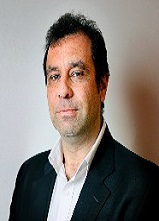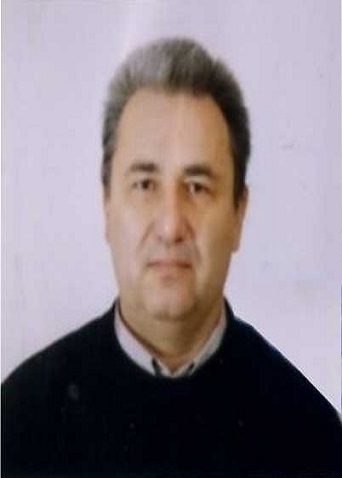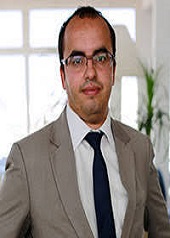Conference Agenda
Explore your options to connect, learn and be inspired from our speakers
Keynote Session:
Title: Assessment of the Extra Capacity Required of Alternative Energy Electrical Power Systems to Completely Replace Fossil Fuels
Biography:
Associate Professor of geometallurgy at the Geological Survey of Finland (GTK) in KTR, the Circular Economy Solutions Unit. Basic degree Bach App. Sc in Physics and Geology, PhD in Mining Engineering from JKMRC University of Queensland. Work experience 18 years in the Australian mining industry in research and development, 12 months at Ausenco in the private sector, 3 years in Belgium at the University of Liege researching Circular Economy and industrial recycling. Work experience in Finland has been at GTK has been in the Minerals Intelligence in the MTR unit, before joining the KTR. Mineral processing and geometallurgy being developed.
Long term objectives include the development and transformation of the Circular Economy, into a more practical system for the industrial ecosystem to navigate the twin challenges of the scarcity of technology minerals and the transitioning away from fossil fuels.
Abstract:
A study was conducted to examine what is going to be required to fully phase out fossil fuels as an energy source and replace the entire existing system with renewable energy sources and transportation. This is done by estimating what it would be required to replace the entire fossil fuel system in 2018, for the US, Europe, China, and global economies. This report examines the size and scope of the existing transport fleet, and scope of fossil fuel industrial actions.
To replace fossil fueled ICE vehicles, Electric Vehicles, H2 cell vehicles for cars, trucks, rail, and maritime shipping was examined. Fossil fuels consumption for electricity generation, building heating and production of steel were all examined for replacement. Calculations reported here suggest that the total additional non-fossil fuel electrical power annual capacity to be added to the global grid will need to be around 37 670.6 TWh. To phase out fossil fuel power generation, solar, wind, hydro, biomass, geothermal and nuclear were all examined. If the same non-fossil fuel energy mix as that reported in 2018 is assumed, then this translates into an extra 221 594 new power plants will be needed to be constructed and commissioned.
Nuclear power was assessed in context of being the only power source to generate electricity. It was found that the NPP fleet cannot expand fast enough, nor will existing uranium resources be enough to be useful.
Biofuels substitution for petroleum (gasoline and diesel) was examined globally. It was found that lack of capacity for the planet earth to produce enough biomass feedstock means that biofuels cannot be scaled up to a full system replacement.
Conclusions were drawn after comparing all these different aspects. It was proposed that the phasing out of fossil fuels will not go to plan.
Title: The innovative project of the 7th wave of innovations “Molecular generator of Andrus – MGAâ€
Biography:
Valery Andrus is experienced in the field of renewable energy, Author of fundamental sciences: Neutron physics, Neutron chemistry, Neutron astrophysics and Creator of three types of renewable energy generators.
Abstract:
Formulation of the problem. Nowadays everyone knows about solar panels. This is a great invention. However, the problem is that the panels only work during the daytime and in the presence of sunlight. An autonomous source of electricity has been developed - the Andrus Molecular Generator (hereinafter MGA), which does not need sunlight, air flows, water flows and recharging. MGA works using the gravitational currents of the Earth. MGA has no moving parts. One MGA tile is equivalent in efficiency to 23 tiles of standard solar panels of the same area. MGA has been generating electricity continuously for at least 10 years. Works day and night, all year round. After receiving investments in the amount of 70 million US dollars, BSA LLC will create three types of MGA in three years - for gadgets, for residential premises, for electric transport. This is a new material energy. A sample has been created that proves the possibility of creating such a device. This is an electrical power multiplier. MGA technology belongs to the 7th wave of innovation. The theoretical basis is the new neutron sciences - physics, chemistry, astrophysics.
Title: An Analysis of innovative financing options for solar rooftop projects in Zimbabwe towards low carbon development
Biography:
Veronica Nonhlanhla Gundu-Jakarasi has her expertise in climate change, environment and natural resources management and development finance. She is a Climate Finance and Sustainability Manager with the Infrastructure Development Bank in Zimbabwe (IDBZ). She saved the Government of Zimbabwe for 10 years and was responsible for the establishment of the Climate Change Management Department in 2014. She has been involved in resource mobilisation, climate change policy analysis, formulation and implementation in Zimbabwe. She supported the accreditation of the Environmental Management Agency to the Adaptation Fund and the IDBZ to the Green Climate Fund. She is currently working on establishing a Climate Finance Facility at IDBZ to support green projects development.
Abstract:
Statement of the Problem: The 2021 IPCC report clearly indicated that climate change was unequivocal, and the world will exceed 1.5 degrees Celsius in the 21st century unless significant reductions in greenhouse gas (GHG) emissions occurred urgently. Zimbabwe has joined the global fight to reduce emissions and develop more sustainably. Renewable energy and energy efficiency are among the prioritised initiatives and rooftop solar is pivotal to the development of inclusive, adaptive, and resilient energy sources The improvement in economic viability of rooftop solar has a great potential to support energy access and affordability even by the most vulnerable communities. However, to role out this programme at scale, there is need to explore different financing options that can make solar rooftops attractive and bankable. The purpose of this study is to explore different innovative climate financing options that Zimbabwe can consider for implementation and scaling up of the rooftop solar projects. A market assessment using focus group discussions, interview guides and semi-structured linkett questionnaires were used to collect data from policy makers, investors, financiers, independent power producers and communities on the gaps, constraints and opportunities to finance solar rooftop projects. An Investor mapping tool was used to map different types of investors, the financing sources, instruments, tools and mechanisms that they were offering to support solar rooftop projects or related initiatives. The findings showed that climate finance, development and impact investors and blended financing options were strategic in advancing the financing of solar rooftops in Zimbabwe. The study noted that additional funding from the Green Climate Fund among others had the opportunity to provide diverse financing instruments that could be tailored to finance solar rooftops, including accounting for environmental and social benefits. In conclusion, innovative financing has the capacity to derisk solar rooftops, use public and development financing to derisk the projects, crowd in private sector financing and use improve the risk return of the projects. The study recommends Zimbabwe to explore climate, impact and blended financing options in advancing solar rooftop projects.
Title: Hydrogen - the fuel for the future: Scope, Opportunities and Challenges in India
Biography:
Yash Sheth has his expertise in renewable and sustainable energy engineering through providing sustainable ideas to address the issue of climate change and resource management. He has been working as a renewable energy and energy efficiency engineer straight after completing his Masters in Renewable and Sustainable Energy from Murdoch University, Australia and Bachelor degree in Mechanical Engineering from India. Moreover, Yash has a passion for writing and innovation, and got his first book, titled, ‘7 Commitments I made to Myself’ published in the year 2018 and has a patent under publication for electric two-wheelers with the India Patent office.
Abstract:
Statement of Problem: Currently, production of green hydrogen fuel is an extremely energy intensive and expensive process. To be deployed at scale, it will need to compete with emerging low carbon alternatives such as electric vehicles and incumbent fossil fuels. Also, use of green hydrogen fuel in end-uses is not always the most efficient solution compared to direct electrification in many applications. According to research, globally, only 4% of the hydrogen is produced through the process of electrolysis.However, hydrogen being an abundant and consistent zero-carbon fuel, time has come on the basis of technological innovations to make hydrogen fuel a major player in the energy system to address the increasing concern about climate change and for this reason, it is necessary to assess the potential role of hydrogen from a systems perspective, considering all potential end-uses, production routes, and value-chain configurations in the Indian context.
Title: Renewable energy in emergent countries: lessons from energy transition in Morocco
Biography:
Karim CHOUKRI: is Phd Engineer on renewable energy and sustainable development. He is head of Wind Energy section, Directorate of Renewable Energy and Energy Efficiency in the Ministry of Energy Mines& Sustainable Development. He is nominated, since 2013, as a Co-Chair of the Moroccan-German Energy Partnership. He has published articles and reports about Renewable Energy including REMAP2030 with IRENA and the Arab Future Energy Index RE Report with RCREEE. He elaborates studies and analysis about renewable energy and its integration on the grid and assessment of energy policing. He is a Member of the Renewable Energy University Network (REUNET) in Morocco
Abstract:
Morocco, which has no conventional energy resources, depends entirely on the international primary energy market to satisfy its growing demand due to its economic growth and demographic progression. The country imports the majority of its energy source supply. Morocco has implemented an important energy strategy that supports the country’s transition to renewable energy and energy efficiency that generalizes across all consumer sectors of the economy (housing, transport, industry). To fulfill this energy transition, the liberalization of renewable energy market was adopted and financial mechanisms have been created to stimulate private sector involvement and to facilitate the implementation of the public–private partnership. The government and public institutions that were created to accompany Morocco’s energy vision have committed to drive the development of projects in the priority areas of renewable energy and energy efficiency, but the country still needs to deal with many barriers related to the policy, financial, and technical frameworks.





